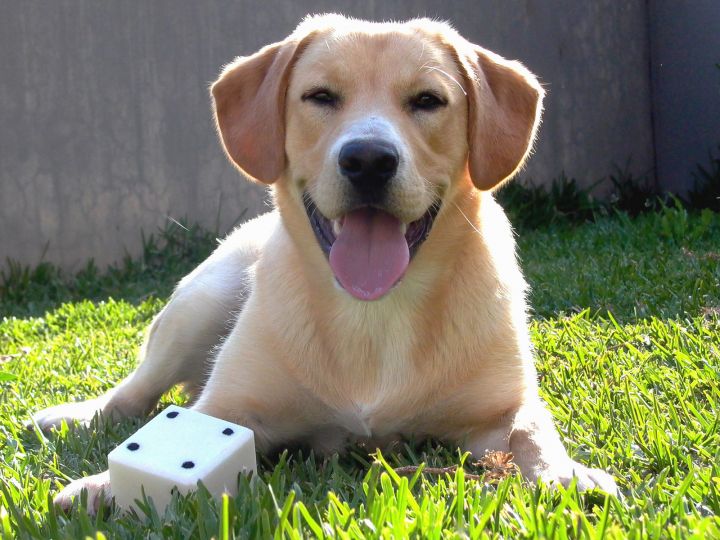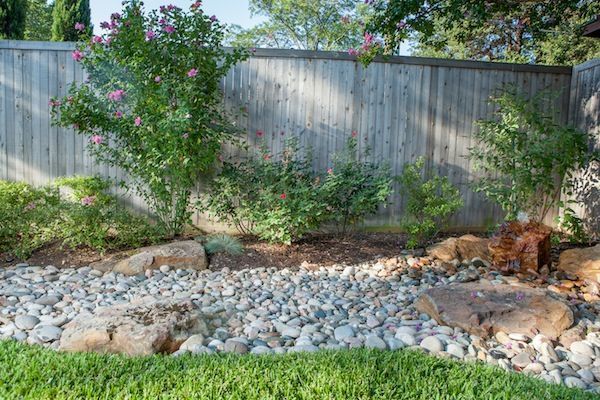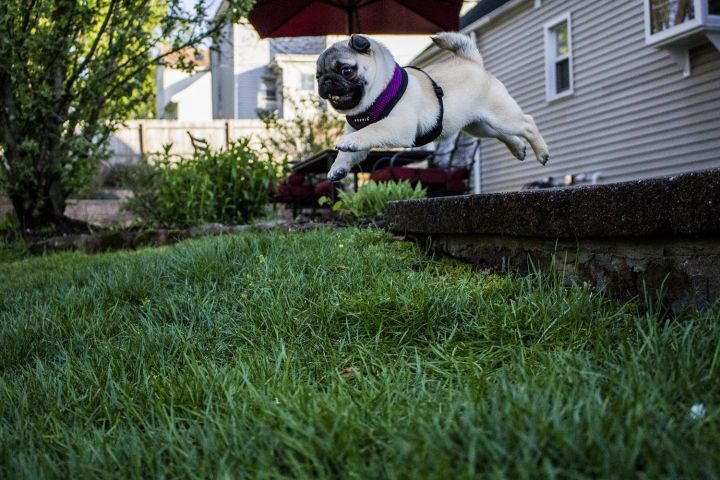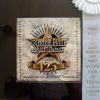Make Your Landscape More Pet-Friendly
June 15, 2024 | By webadmin
Pet-Friendly Landscape Tips to Make You & Your Pets Happy
A major part of being outside and enjoying your landscape is being able to share that with your family – both 2 and 4-legged members. We all love our dogs. But let’s face it, they can take a toll on our yards! If you want a pet-friendly yard both for you and your dog, we’ve put together some tips.

Create paths for exercise
Your pet may have already worn a path into your lawn while burning off energy and patrolling their territory, so don’t try to reinvent the wheel on this one. It’s better to follow their lead and create a real pathway that follows their normal pattern. Be sure to use materials that are friendly to your pet’s feet – like smooth flagstone or smaller sized mulch. Stay away from products like metal edging. You can also convert small side yards to dog runs with extra fencing.
Build borders
Many dogs like to get into landscape beds to dig or do their other business. You don’t need to build a wall to keep your pets out of landscape beds, but simply installing a stone or driftwood border can be enough to keep smaller dogs from over- exploring.
You can also create a “moat” by digging a swale between the lawn and landscape beds, then filling with gravel or river rock. Moats or swales can also be an attractive landscape feature. Having to walk across pokey sharp gravel to get to the landscape bed may be enough to discourage your dog from exploring.

Example of a river rock swale.
Save your new plants
Ever spent the morning planting petunias only to find your beloved dog has dug them all up? Small 4” transplants are more susceptible to curious pups so you may want to start with larger plants. Gallon-sized plants won’t be as easy for them to pull up. You can also use pieces of chicken wire to place over the new plantings temporarily until they are rooted in.
There are also several natural wildlife repellent products you can apply around your newly planted beds. Or, just grab that jar of crushed red pepper from the kitchen. Sprinkle it on the ground around the plants.
Doggy still digging?
If your dog seriously loves to dig it could be for a few different reasons. They might be bored and digging around for insects (or burying toys) for a fun distraction. But digging around your plants or trees won’t make anyone happy. If your dog is a digger, consider installing a sandbox for them! Doggy sandboxes can be a ton of fun for your pup. Dampen the sand for them as it makes it cooler and entices them to dig. Hide some of their toys in the sandbox so they learn to dig for them there, instead of your beds. Place your doggy sandbox in a shady spot in the yard because it might just become their favorite place to hang out.
Toxic plants
Make sure to choose plants that are friendly for your pets. In order to avoid injuries while playing and the dreaded barbs-in-fur scenario, don’t plant the thorniest roses or spiny agave.
Many common landscape plants are also toxic to your pets. It may be common knowledge to avoid plants such as castor bean, foxglove and oleander, but, you might be surprised by many of the other plants that can harm your pets. Did you know azalea, boxwood, caladium, and even herbs like chives are toxic for your pets? The most comprehensive list of pet-toxic plants can be found on the ASPCA website.
If your dog never chews on plants in the garden then you usually don’t have to worry too much about common plant choices. However, if you have a new puppy, or an older dog who has taken to gnawing on plants in the garden, you may need to either remove toxic plants or create barriers around them.
__full-width.jpg)
Boxwood is toxic to pets.
Taking care of “business”
No one likes cleaning up dog poop all over the yard. If you can, it’s best to train your pups to use a particular area of your landscape (if you have enough room to do so). Just know that dog urine and feces can be tough on existing lawn grasses, causing burn and die out. You might even consider installing a section of faux lawn in your dogs “business” area. Artificial turf is permeable and it’s easy to clean - just hose it off.
Shady retreat
Shade is a valuable commodity here in Texas. Our summer sun and heat is no joke and dogs and cats can quickly overheat outdoors. If your dog spends a lot of time in the yard, be sure to include a shady spot where they can cool off. You may even want to install a small pond where your water-loving dogs can take a dip or a fun water feature that they can play.

Ditch the chemicals
If your pets spend a lot of time in the yard, you may want to stay away from too many synthetic lawn and landscape chemicals. Treatments applied to lawns can easily be picked up on paws or fur and ingested. Consider switching to an organic lawn treatment program. Try using organic pest and disease treatments on surrounding landscape plants when necessary, or release predatory insects for natural control. As always, be sure to read all labels thoroughly before applying any chemicals – even organic treatments.
If you plan to make your landscape a place that can be enjoyed by all members of your family and just don’t know how to start, give us a call for a pet-friendly design tailored to the pawed ones in your life.
